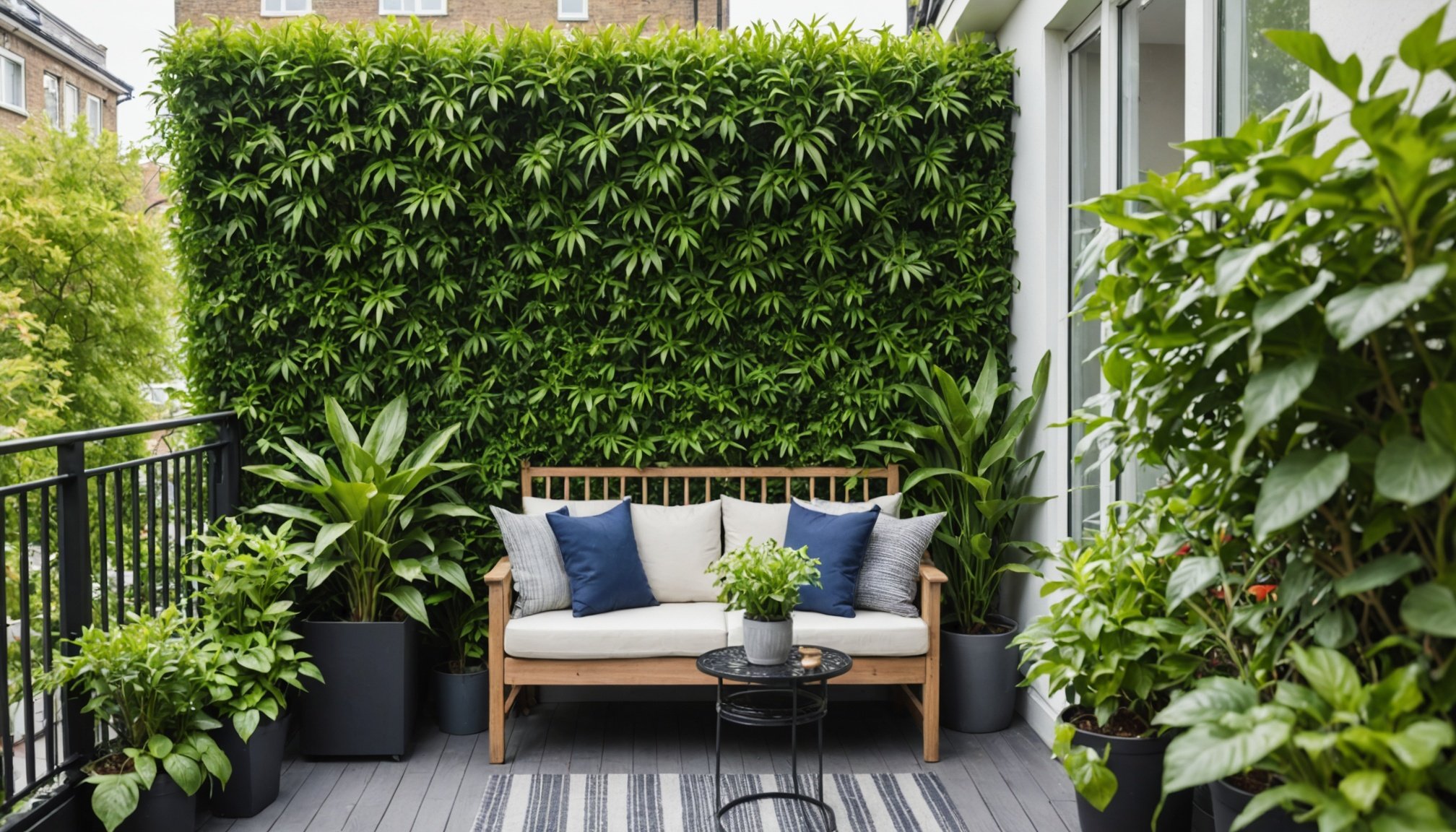Crafting a Lush Privacy Screen with Balcony Plants: Top Tips and Ideas
Creating a private and inviting outdoor space, especially on a balcony, can be a challenging but rewarding task. One of the most effective ways to achieve this is by using plants to create a natural privacy screen. Here’s a comprehensive guide to help you craft a lush and functional privacy screen using balcony plants.
Why Use Plants for Privacy Screening?
Using plants for privacy screening is a versatile and aesthetically pleasing solution. Here are a few reasons why this method stands out:
In the same genre : Transforming Your Garage: The Ultimate Guide to Creating an Exceptional Home Gym
- Natural Beauty: Plants add a touch of natural beauty to your outdoor space, enhancing the overall image and ambiance of your garden or balcony.
- Flexibility: There are numerous types of plants that can be used for screening, allowing you to choose the ones that best fit your climate, space, and design preferences.
- Environmental Benefits: Plants help purify the air, reduce noise pollution, and provide shade, making your outdoor space more comfortable and eco-friendly.
Choosing the Right Plants
Selecting the right plants is crucial for creating an effective and attractive privacy screen. Here are some key considerations and plant recommendations:
Fast Growing Climbing Plants
Climbing plants are ideal for balconies as they can quickly cover trellises or fencing, providing rapid screening.
Have you seen this : Transforming Your Garage: The Ultimate Guide to Creating an Exceptional Home Gym
- English Ivy: Known for its fast growth and ability to thrive in various conditions, English ivy is a popular choice for creating a living wall or screen[4].
- Clematis: These flowering vines are not only beautiful but also grow quickly, making them perfect for adding a touch of color and privacy to your balcony[4].
- Boston Ivy: Similar to English ivy, Boston ivy is fast-growing and can cover large areas quickly, providing excellent screening.
Dense Shrubs and Trees
For a more permanent solution, consider using dense shrubs or small trees.
- Boxwood: Known for its dense foliage, boxwood is a great option for creating a privacy hedge. It can be trimmed to maintain a desired shape and size[4].
- Hydrangea: These shrubs produce beautiful flowers and have dense foliage, making them a great choice for both privacy and aesthetic appeal[4].
Table: Plant Comparison for Privacy Screening
| Plant Type | Growth Rate | Maintenance | Aesthetic Appeal | Climate Tolerance |
|---|---|---|---|---|
| English Ivy | Fast | Low | High | Versatile |
| Clematis | Fast | Medium | High | Prefers cooler |
| Boston Ivy | Fast | Low | High | Versatile |
| Boxwood | Medium | High | High | Prefers well-drained soil |
| Hydrangea | Medium | Medium | High | Prefers moist soil |
Designing Your Privacy Screen
Designing your privacy screen involves more than just choosing the right plants. Here are some tips to help you create a cohesive and functional design:
Use Trellises and Fencing
Trellises and fencing provide the structure that climbing plants need to grow and thrive.
- Trellis Systems: Install a trellis system against your balcony railing or wall to support climbing plants. This can be made of wood, metal, or plastic[4].
- Living Walls: Consider creating a living wall using a trellis or a wall-mounted planter. This not only adds privacy but also enhances the image of your outdoor space.
Incorporate Pots and Planters
Using pots and planters can add flexibility to your design and allow you to move plants around as needed.
- Large Planters: Use large planters to house dense shrubs or small trees. This can create a natural barrier between your balcony and neighboring spaces[4].
- Hanging Baskets: Hanging baskets can be used to add additional screening and aesthetic appeal. They are particularly useful for balconies with limited floor space.
Create a Layered Effect
For maximum privacy, consider creating a layered effect with different types of plants.
- Layered Planting: Plant taller shrubs or trees towards the back and use climbing plants or smaller shrubs in the front. This creates a dense and layered screen that provides excellent privacy[4].
Practical Tips for Installation and Maintenance
Installing and maintaining your privacy screen requires some planning and regular care. Here are some practical tips to keep in mind:
Installation
- Choose the Right Location: Ensure that your plants are placed in an area that receives the right amount of sunlight and water. Most plants prefer well-drained soil and partial to full sun[4].
- Use Simple Tools: For easy installation, use simple tools like zip ties or plant clips to secure climbing plants to trellises or fencing[1].
Maintenance
- Regular Watering: Make sure to water your plants regularly, especially during the initial growth phase. Overwatering can be detrimental, so ensure the soil is well-drained[4].
- Pruning: Regular pruning is essential to maintain the shape and size of your plants. This also encourages healthy growth and prevents the plants from becoming too dense or unruly[4].
Alternatives to Traditional Plant Screens
If you’re looking for alternatives or additional ideas to enhance your privacy screen, here are a few options:
Artificial Screens
Artificial screens can be a good option if you prefer a low-maintenance solution.
- Artificial Ivy: Artificial ivy screens are made from durable materials and can mimic the look of real ivy. They are easy to install and require minimal maintenance[3].
Garden Features
Incorporating other garden features can enhance the privacy and aesthetic appeal of your outdoor space.
- Water Feature: A small water feature like a fountain can add a soothing sound and create a sense of privacy by masking external noises[4].
- Seating Area: Creating a cozy seating area with plants surrounding it can make your outdoor space feel more private and inviting.
Creating a lush privacy screen with balcony plants is a rewarding project that can significantly enhance the privacy and beauty of your outdoor space. By choosing the right plants, designing a cohesive layout, and following practical installation and maintenance tips, you can enjoy a private and inviting garden or balcony.
As a final note, remember that the key to a successful privacy screen is to combine functionality with aesthetic appeal. Here’s a quote from a gardening expert that sums it up well:
“Plants are not just for beauty; they are also for functionality. By choosing the right plants and designing your space thoughtfully, you can create a privacy screen that not only protects your space but also enhances its image and ambiance.”
By following these tips and ideas, you can create a privacy screen that is both effective and visually appealing, turning your balcony into a serene and private oasis.











